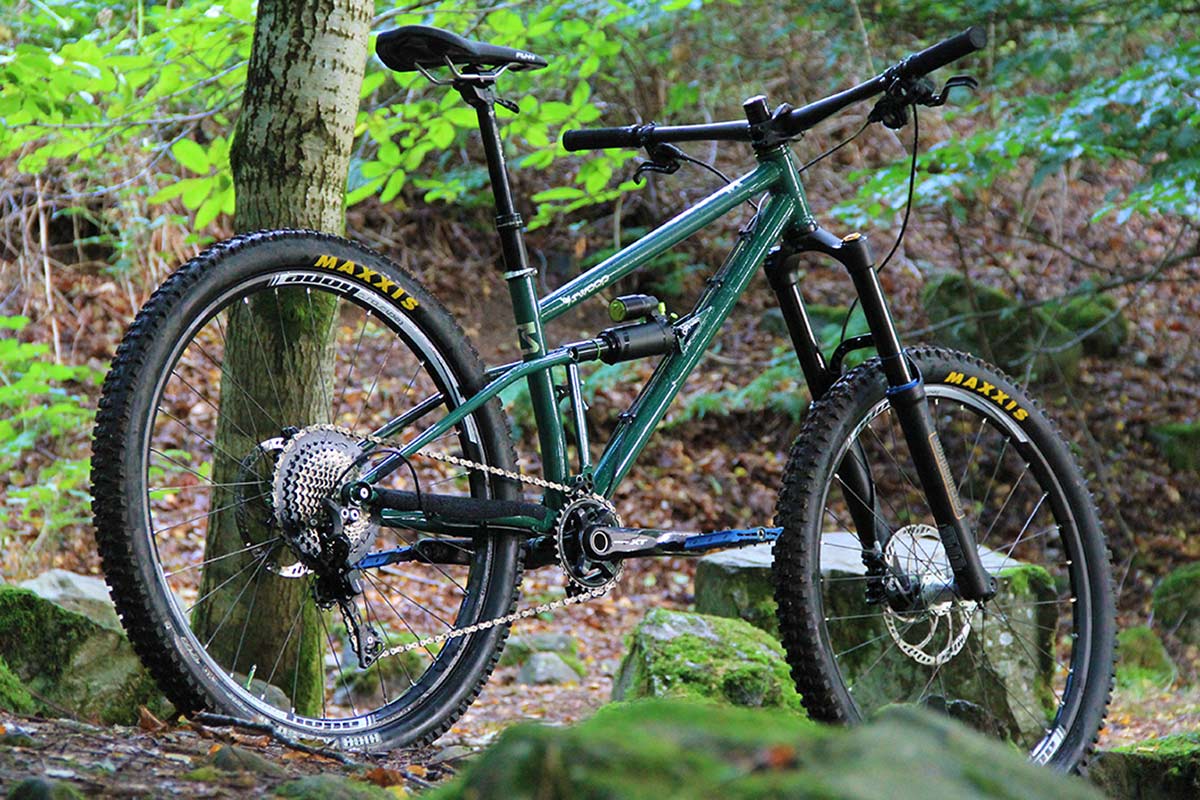We know, there’s no such thing as a stupid question. But there are some questions you might not want to ask your local shop or riding buddies. AASQ is our weekly series where we get to the bottom of your questions – serious or otherwise. This one covers the finer points of single-pivot suspension design. Hit the link at the bottom of the post to submit your own question.
This week we’re back on suspension, grilling single-pivot mountain bike designer Joe McEwan on the finer points of this classic low maintenance platform. Joe is the founder of Starling Cycles, based in Bristol, UK.
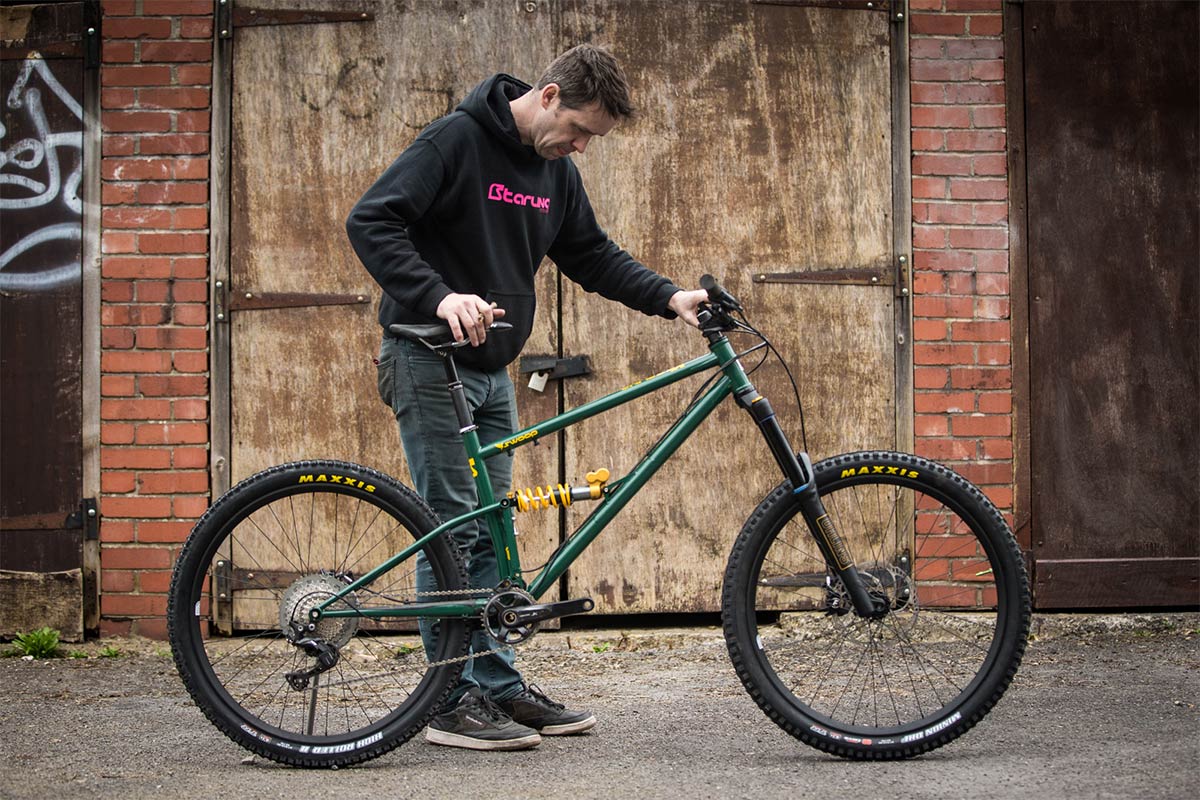
Starling Cycles is a relatively young brand. It was only 4-5 years ago that Joe started making steel full suspension mountain bikes, racing his first Starling at an Enduro World Series event, no less. That was a single pivot. Joe has gone on to produce several full suspension mountain bikes – all steel, many single-pivot. You can check out our Workshop Tour of Starling Cycles here.
Joe knows a thing or two about single pivot bikes, so we sent him the following questions. Note: We also sent these questions to a number of other brands, most of whom were too busy to provide comment. Alan Findlay of Pipedream Cycles was one of those – he didn’t have time to do all of the questions justice but has provided comment at the foot of this feature.
How does a single-pivot suspension design influence a bike’s anti-rise characteristics? In other words, how does a single-pivot suspension platform perform under harsh braking?
Starling Cycles: Anti Rise is how the bike’s suspension is affected by weight transfers. I design my bikes to have the anti-rise as close to 100% as possible (i.e. weight shifts do not affect suspension) through the full stroke of the suspension. So, braking has very little impact on the suspension.
But, this feature is independent of whether a bike is single or multi pivot, just how the designer chooses to locate the pivots.
How does a single-pivot suspension design influence a bike’s anti-squat characteristics?
Starling Cycles: Anti squat is pretty much the same as anti rise; it’s how weight shifts affect the suspension. But, in this case the application of power can act to add to the effect on the suspension. Again, I design my bikes to have the anti-squat as close to 100% through the full stroke of the suspension.
Some designers believe you need to design the suspension so that it counteracts the power related forces. But, in reality the power is so low (most literature on the subject is for motorcycles) while seated, it isn’t really a concern, and when standing up pedaling the weight shifts are so dynamic anyway that it is a bit academic trying to counteract them.

Again this feature is independent of whether a bike is single or multi pivot, just how the designer chooses to locate the pivots.
In my opinion you design the bike to be as neutral as possible (as close to 100% anti rise and anti squat) through the full stroke. This gives an understandable bike, and as we all know, its not a bike that’s fast but the rider. So, let’s give the rider the best chance to understand his or her bike and ride it fast.
Is pedal kickback more or less pronounced on a single-pivot suspension bike as compared to a four bar linkage, for example?
Starling Cycles: As I stated before in a similar Q&A about high pivot bikes, about what pedal kickback is, I’m inclined not to comment. Published calculations are either overly simplistic, or overly complicated and poorly presented.
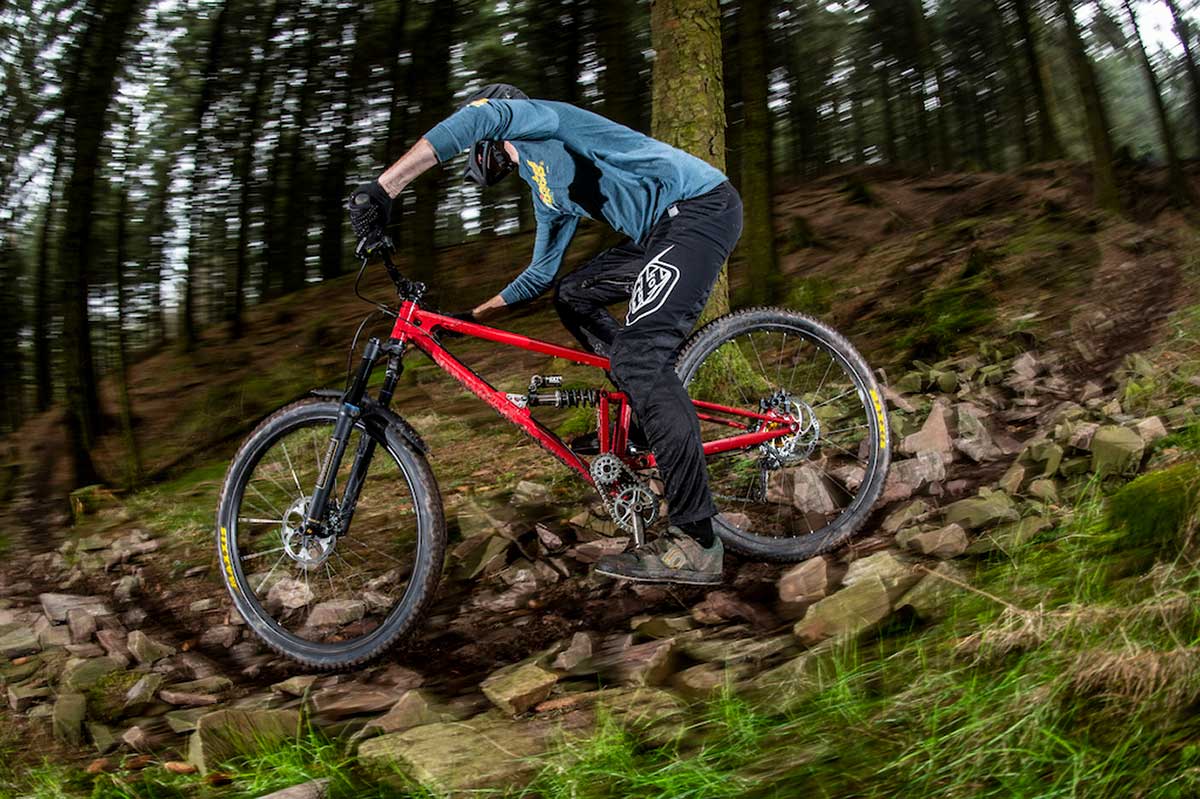
Many neglect the impact of the derailleur or the fact that the chain can’t be loaded in compression. I’m actually inclined to think that, for the case where suspension movement upwards puts the chain in compression (such as with my bikes), pedal kickback is zero. I just need to spend some time ensuring my logic is correct.
Editor’s note: We covered Pedal Kickback in great detail in a recent AASQ.
But lets continue this discussion assuming it’s a real effect…
In the most simplistic terms, as the suspension moves through its travel, the change in length of the upper portion of the chain (the part that is under load) causes a force within that chain. This force is translated into forces acting in the cranks and pedals, thus termed pedal kickback.
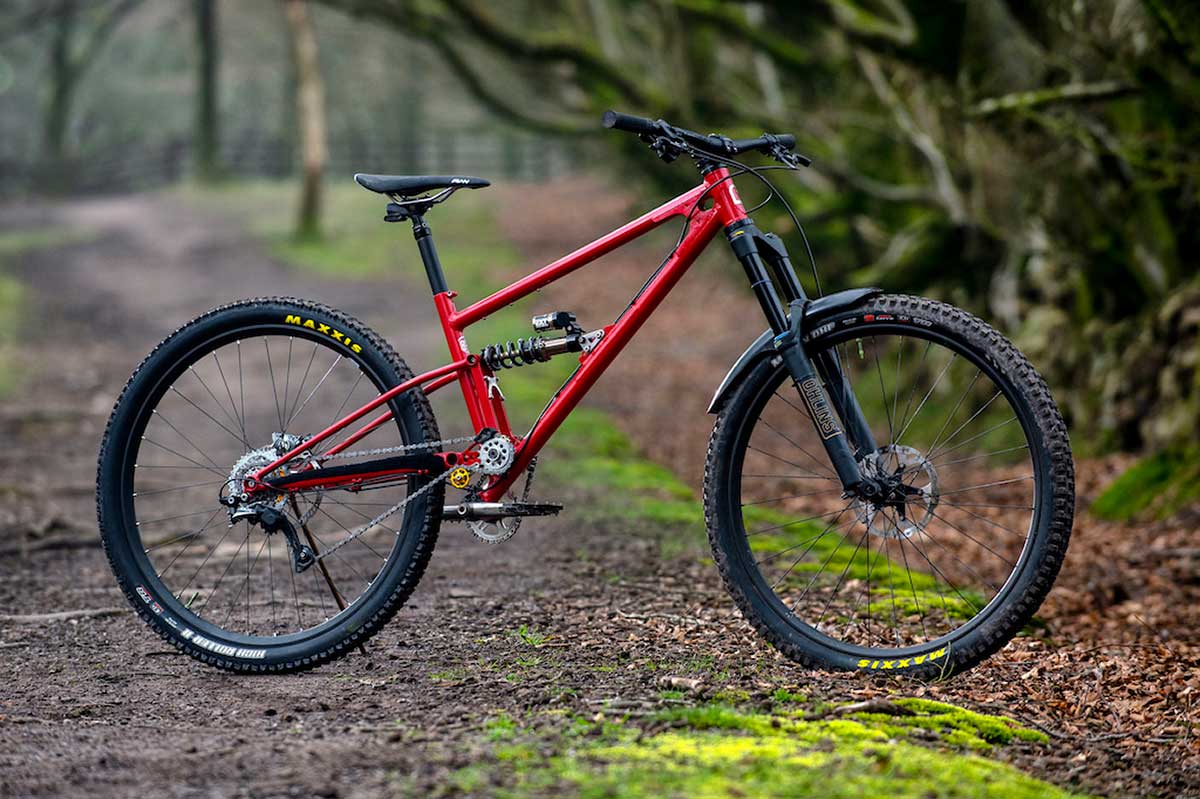
For many Starling Cycles bikes the chain is in line with the main pivot so, chain forces due to this are negligible. For the rear portion of the chain it depends on where the chain sits on the cassette – bigger gears give more kickback. So, as all (except gearbox bikes) have a cassette, the kickback on my bikes is as low as it can be (if it is not in fact zero).
Anyway as before, this feature is independent of whether a bike is single or multi pivot, just how the designer chooses to locate the pivots.
Does a single pivot suspension bike work better with an air shock or a coil shock?
Starling Cycles: Single pivot bikes (those without linkage-driven shocks) tend to have a relatively constant leverage ratio through the full shock stroke. Popular wisdom is that this doesn’t work with coil shocks because the liner nature of the coil means you get a harsh bottom out.
With the compliance in the steel swing arms of my frames, combined with big rubber bumpers (or hydraulic bottom out) on modern coil shock, you just don’t get a harsh bottom out. So that’s not an issue!

What you do get with a coil shock is a plush initial stroke followed by a supportive mid-stroke. On air shocks, the initial stiction means riders tend to soften off the shock to get good small bump compliance. This mean that once the stiction has been overcome, the shock has less support and blows through the mid-stroke.
One other benefit of a linear leverage ratio, is that suspension tuners are given a nice easy job. They much prefer setting up a bike for a linear stroke than some strange marketing-driven progressive S-curve!
Does a single pivot suspension platform rely solely on the setup of the shock to determine the progressiveness of the travel?
Starling Cycles: See above: compliance in a steel frame, and big rubber bumpers (or hydraulic bottom out) provide plenty of control for the end of the stroke to stop harsh bottom outs.
Where do single pivot bikes excel? In what type of riding situation would a single-pivot outperform all other types of linkage design?
Starling Cycles: A well designed single pivot provides a great suspension platform to work in all conditions. But, where they excel is the reduced maintenance (two bearings versus a multitude). So, a single pivot outperforms all badly maintained multi-pivot bikes.
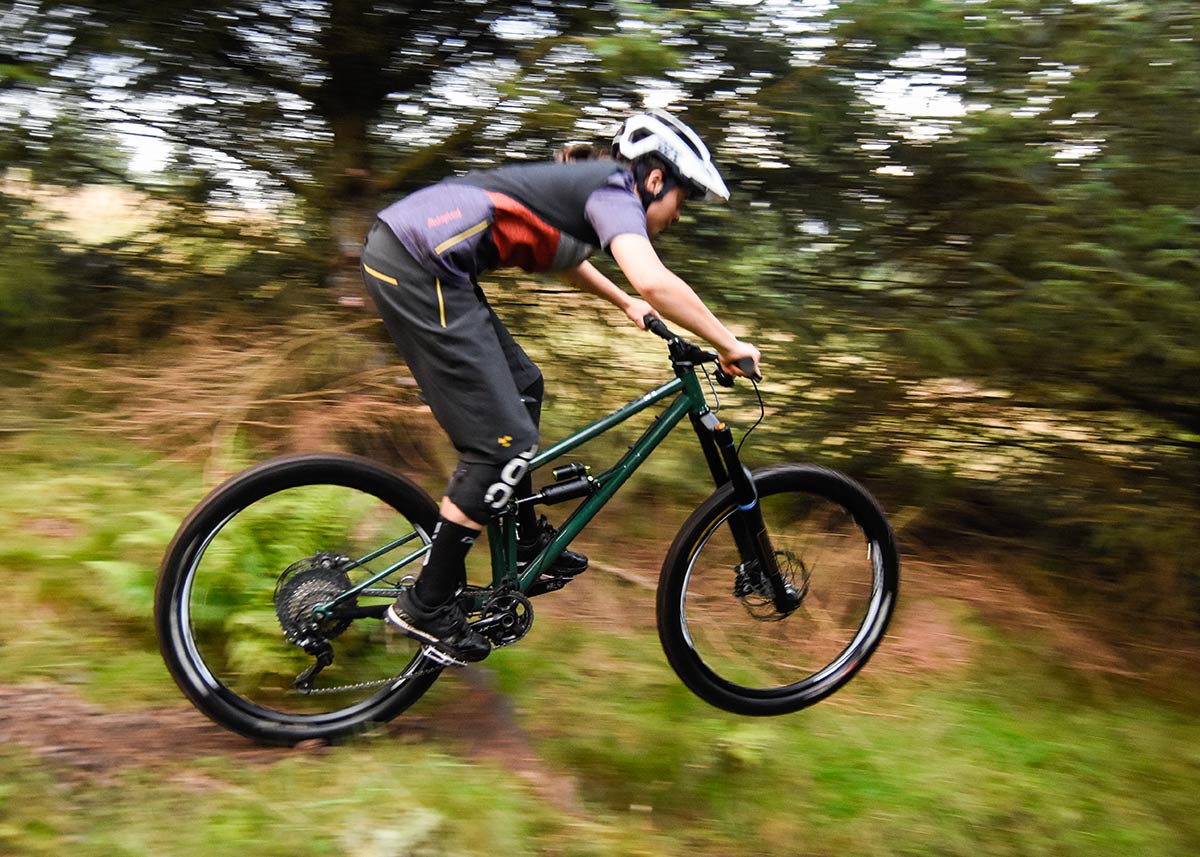
You need to bear in mind that a new suspension system is rarely driven by a performance requirement, rather marketing looking for a differentiator from competitors’ similar looking bike!
What does the rear axle path look like on a single-pivot bike as compared to a four bar linkage?
Starling Cycles: The rear wheel of a single pivot performs an arc around the pivot. A four bar linkage has an effective pivot working at some moving point in space not constrained by the bike structure. This allows you to perhaps design a different wheel path, but in practice the differences are small.
Does a single-pivot design place the rear shock under greater stress than say, a linkage-driven single-pivot, or a DW link design?
Starling Cycles: Shock damage comes from lateral loading. There’s a bit of misunderstanding when it comes to shock loading. Any good engineer will tell you that load always tracks to the stiffest path. If you put the shock within a super stiff linkage, there’s a tendency for the load to track through the shock and damage it. I’m sure, most suspension tuners will tell you about issues with yoke-driven shocks.

For a shock loaded by a flexible swing arm for example, there’s little stiffness laterally, so no (impact) shock tracks through the (rear) shock. The majority of lateral load tracks via the chainstays instead. There are limits with very large deflections but plastic top hat bushings or spherical bearings provide plenty of rotational capability.
Again this feature is independent of whether a bike is single or multi pivot, just how the designer chooses to design their suspension mounting.
Alan Findlay of Pipedream Cycles
Modern suspension technology has revolutionized full suspension bikes and (to an extent) leveled the playing field between the performance of one suspension design and another.
Personally, I’ve always liked single pivots for mucky (UK) riding as they are generally low maintenance, can handle the climate and conditions ‘better’, perform predictably and do the job. They’re generally easier to fabricate and it’s possible to tune the characteristics you identify – anti-rise, anti-squat, progressive/linear response, etc – with the use of a clevis/yoke-activated shock.
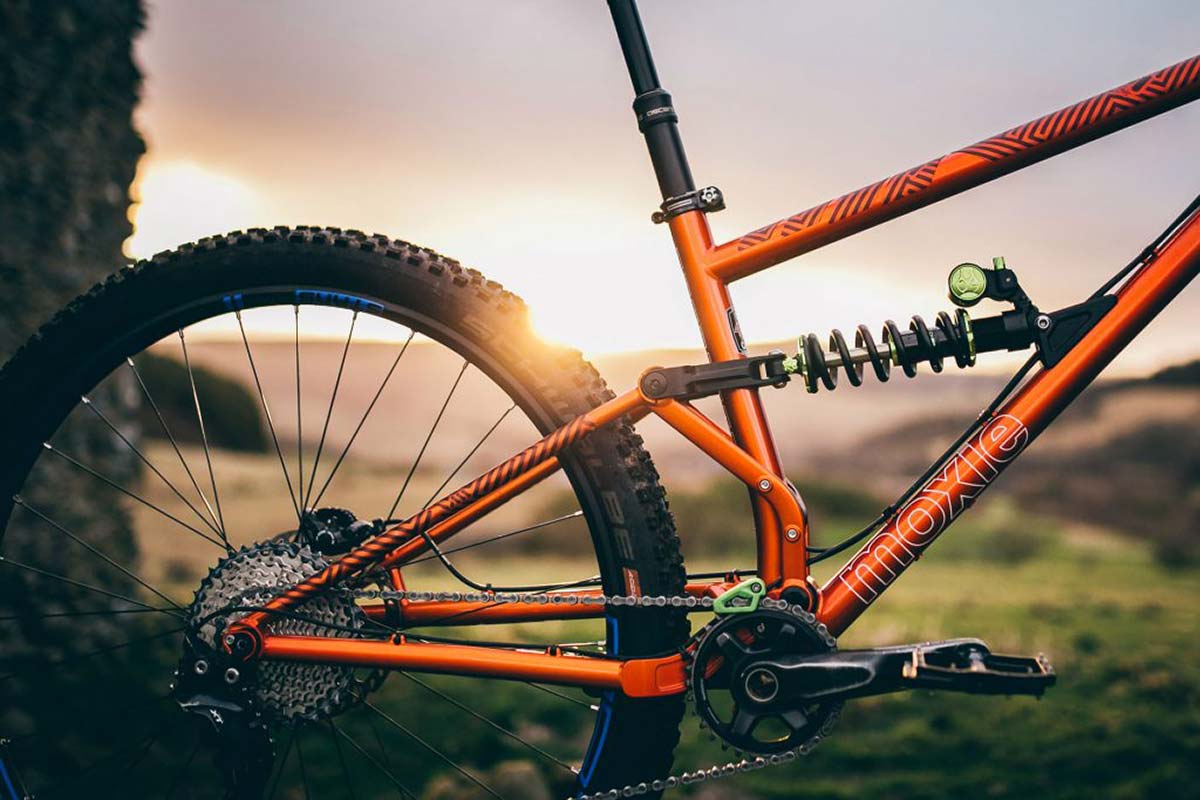
Going back to my first comment; I think durability, reliability and predictable handling are the most important qualities and a single pivot delivers these. A lot of the ‘blurb’ that brands push is hype and hoopla but on the plus side, the more suspension platforms there are, the more choices riders have which is always a good thing.
Air shocks generally offer more tuning options and can be dialed-in easier than a coil which can be as much as 50lbs too ‘light’ or ‘heavy’ but that’s changing with the advent of progressive springs.
Editor’s Note: We reached out to several brands who make single-pivot full suspension mountain bikes, but did not receive a response in time for publication. Minor edits were made to Starling’s responses for clarity.
Got a question of your own? Click here to use the AASQ form to submit questions on any cycling-related topic of your choice, and we’ll get the experts to answer them for you!

